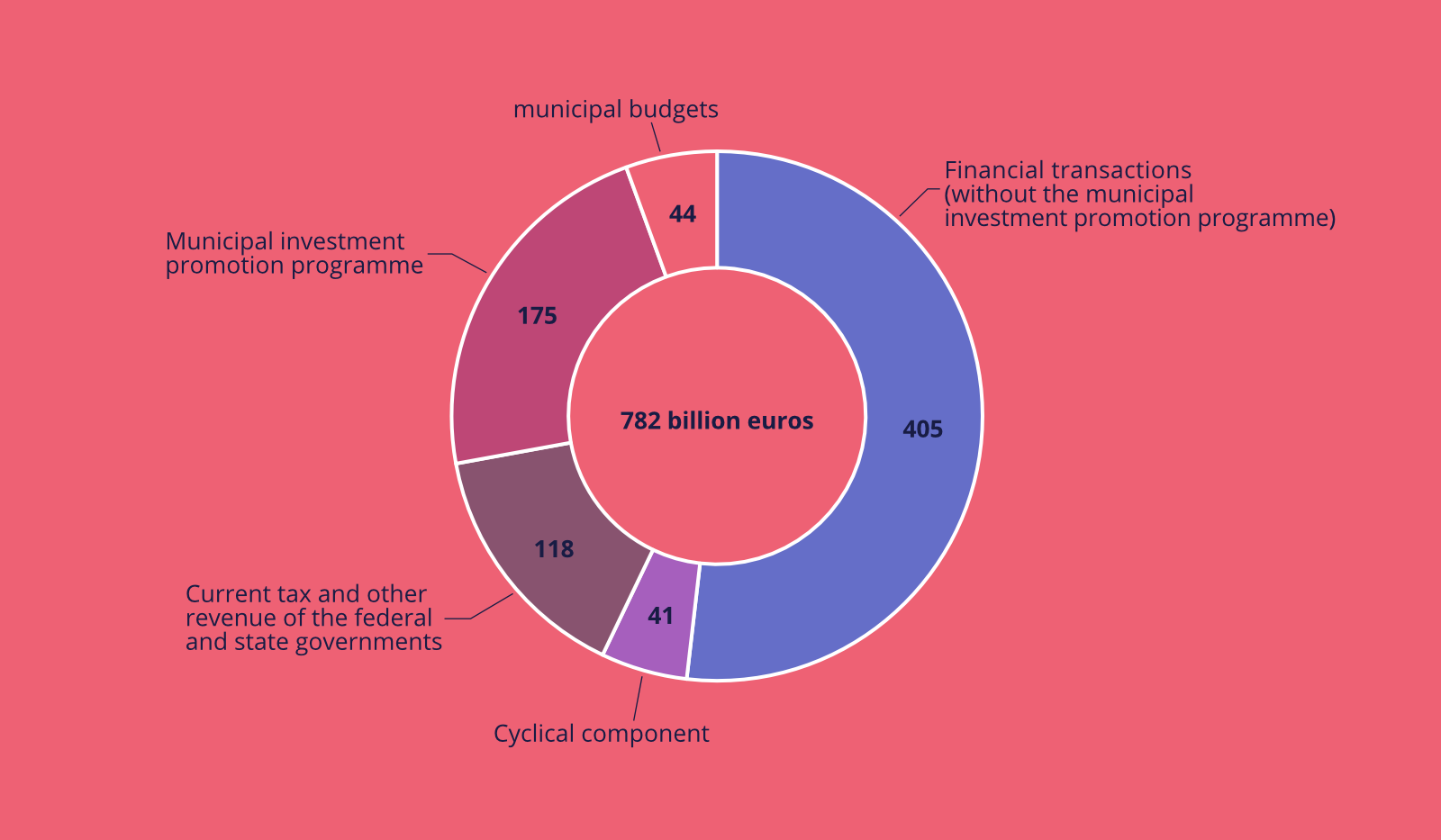
How to finance Germany’s modernisation
Florian Schuster-Johnson, Felix Heilmann, Dr. Max Krahé, Philippa Sigl-Glöckner, Janek Steitz
Germany needs 782 billion euros in additional public spending for its modernisation by 2030. German politicians have so far lacked a reliable financing framework for this purpose; there are constant discussions around spending cuts or a constitutional reform of the debt brake. Neither strategy can realistically be implemented in the short term. In this policy paper, we show that many of the needs identified can in fact be financed without amending the Basic Law, and thus be addressed in the short term: the debt brake already provides options to take on debt for productive expenditure as part of the cyclical component and financial transactions. Nevertheless, these financing solutions are insufficient, complex, and more expensive than necessary. A reform of the debt brake would therefore be sensible, but this will first require a new understanding of “sustainable public finances”.
Why did we write the paper?
Germany must modernise itself in order to master geopolitical, demographic, climate policy, and economic challenges. To do so, it needs additional public funding of 782 billion euros by 2030. So far, German policymakers have lacked a reliable funding framework for this. A fundamental reform of the debt brake or savings are generally being discussed. Neither of these strategies can realistically be implemented in the short term, as they require either a two-thirds majority in parliament to change the German constitution or drastic cuts to the budget with far-reaching social and economic side effects that would prevent a simple majority from being obtained. We therefore wanted to explore other financing options for modernising Germany that are feasible and politically viable without changing the German constitution. The aim of the paper is to stimulate the debate on a reliable financing framework for the modernisation of Germany and to enrich it with constructive proposals. The pros and cons of these and other proposals should be discussed during the next Bundestag election campaign so that a financing framework with broad social support can then be developed.
What did we learn?
We have learned that many of the additional expenditures required can be financed even without reforming the debt brake in the German constitution. Specifically, there are two mechanisms that provide for debt within the framework of the debt brake: financial transactions and the cyclical component. They can be used to finance investments and other productive expenditure. This does not require a change to the German constitution, but only simple legal adjustments. However, even with these instruments, there will be additional burdens on the current revenues of public budgets. In addition, the debt brake makes many financing options unnecessarily expensive and complicated. A debate on a fundamental reform is therefore necessary. However, politicians should first stop idealizing the debt ratio as a measure of sustainable public finances.
Um über unsere weiteren Veröffentlichungen auf dem Laufenden zu bleiben, abonniert gerne unseren Newsletter.
Hat dir der Artikel gefallen?
Teile unsere Inhalte



